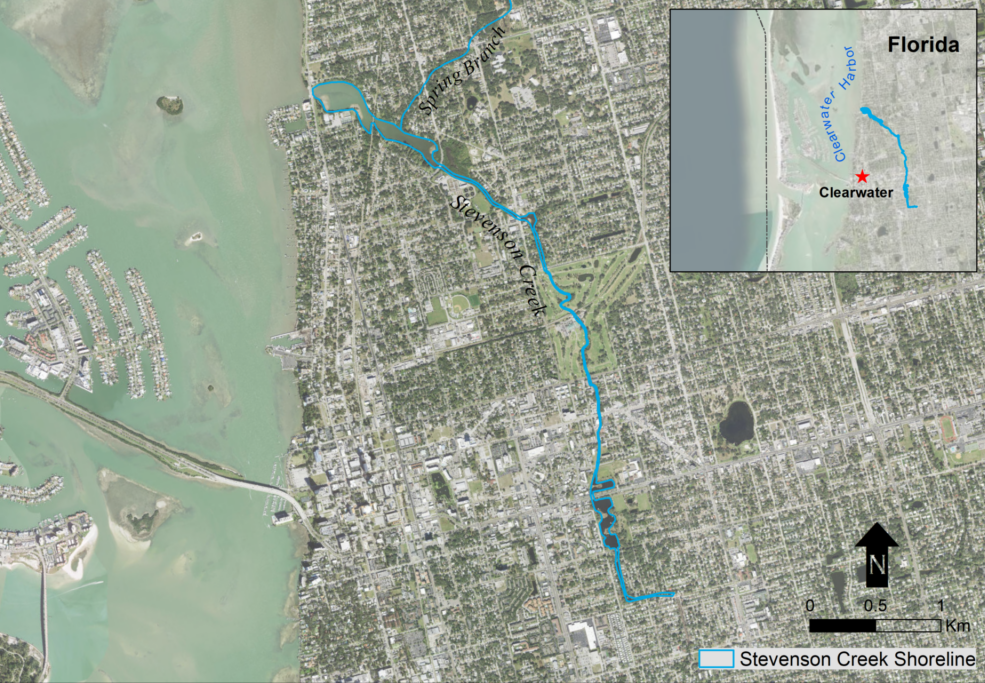
Southwest Florida Water Management District Tampa
From 2007 – To 2011
Model and report submitted in 2011
The Stevenson Creek Watershed encompasses 6,286 acres in west central Pinellas County, Florida. The watershed area spans several jurisdictions, including the City of Clearwater (4,057 acres or 65 percent of the watershed), the City of Dunedin (1,287 acres or 20 percent), unincorporated parts of Pinellas County (859 acres or 14 percent), and the City of Largo (83 acres or 1 percent). Land uses within the basin are predominantly medium and high-density residential, commercial, and open space. The tidal segment of Stevenson Creek (Waterbody Identification unit or WBID 1567) was 303(d)-listed, and therefore impaired. The water quality parameters assessed using the Impaired Waters Rule (IWR) were dissolved oxygen and nutrients (chlorophyll-a).
The goal of this project was to build, calibrate, and validate a watershed pollutant loading model and a receiving water quality/hydrodynamic model for dissolved oxygen and nutrients. These models were used to develop Total Maximum Daily Loads (TMDLs) for the tidally influenced and impaired segment of Stevenson Creek (WBID 1567).
DSI conducted the receiving water quality modeling component of the project, developing a three-dimensional (3D) water quality model of the tidally influenced reach of Stevenson Creek using the Environmental Fluid Dynamics Code (EFDC) model. The water quality model simulated the full nitrogen and phosphorus components, as well as the carbon/biological oxygen demand loadings to the creek. The impact due to actual discharges from the Marshall Street Advanced Wastewater Treatment Plant was also incorporated.

The EFDC model flow boundary conditions were linked to the flow and nutrient loadings from the HSPF model results provided by CDM, who conducted the HSPF calibration/validation work. The HSPF/EFDC linkage was streamlined using the latest updates to EFDC+ Explorer. Once calibrated (2004) and validated (1999-2002), the model was completed and the TMDL base for the period 1999 to 2006 was set up. This model was then used by FDEP to develop the recommended dissolved oxygen and nutrient TMDLs for Stevenson Creek.
DSI submitted the final model and report to the client in 2011.